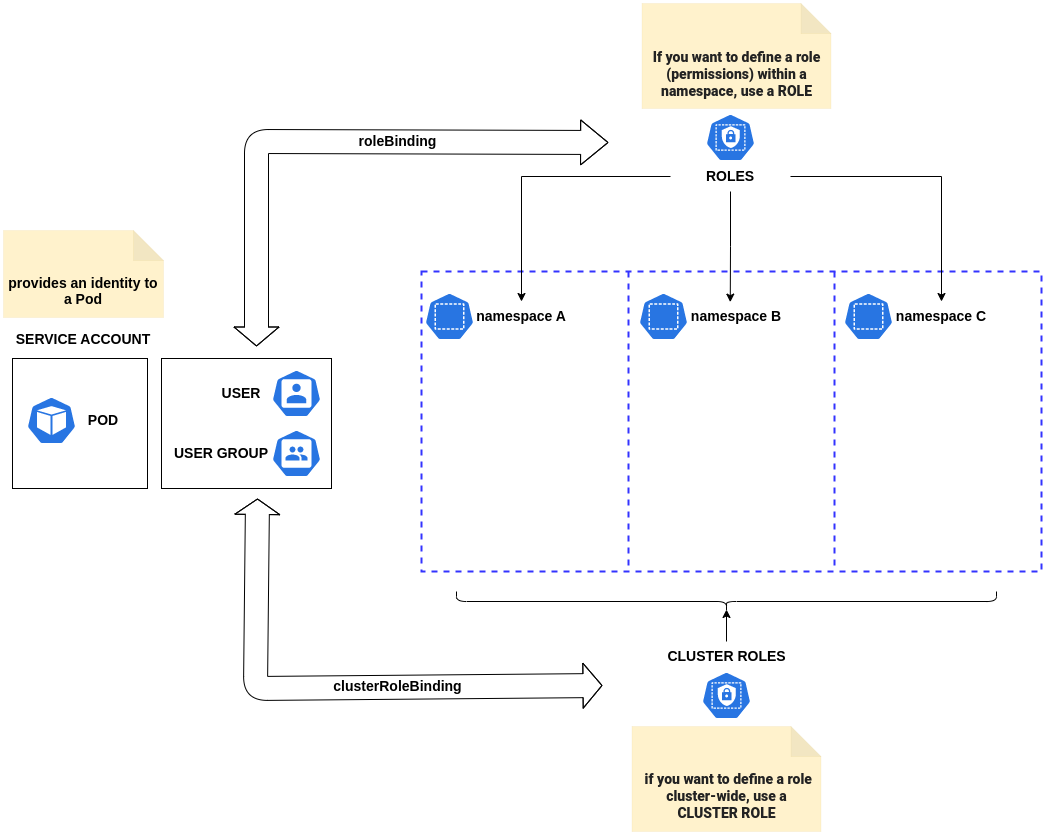Who, What, Where
Kubernetes Role-Based Access Control (RBAC) is a form of identity and access management (IAM) that involves a set of permissions or template that determines who (subjects) can execute what (verbs), where (namespaces). RBAC is an evolution from the traditional attribute-based access control (ABAC)—which grants access based on user name rather than user responsibilities:
- Who: Users, User Groups, Pods.
- What: Verbs, almost all object resource types support the standard HTTP verbs GET, POST, PUT, PATCH, and DELETE. Kubernetes also uses its own verbs, which are often written lowercase to distinguish them from HTTP verbs. Kubernetes uses the term list to describe returning a collection of resources to distinguish from retrieving a single resource which is usually called a get. If you sent an HTTP GET request with the ?watch query parameter, Kubernetes calls this a watch and not a get (see Efficient detection of changes for more details). For PUT requests, Kubernetes internally classifies these as either create or update based on the state of the existing object. An update is different from a patch; the HTTP verb for a patch is PATCH.
- Where: Namespace resources, non-namespaced resources.

Building blocks: Roles and bindings
Role-based access control (RBAC) is a method of regulating access to computer or network resources based on the roles of individual users within your organization.
RBAC authorization uses the rbac.authorization.k8s.io API group to drive authorization
decisions, allowing you to dynamically configure policies through the Kubernetes API.
The RBAC API declares four kinds of Kubernetes object: Role, ClusterRole, RoleBinding and ClusterRoleBinding.

Examples
Key points
| Concept | Description |
|---|---|
| White listing security model | An RBAC Role or ClusterRole contains rules that represent a set of permissions. Permissions are purely additive (there are no “deny” rules) |
| Role -> Namespace | A Role always sets permissions within a particular namespace; when you create a Role, you have to specify the namespace it belongs in. |
| ClusterRole -> Non Namespace | ClusterRole, by contrast, is a non-namespaced resource. The resources have different names (Role and ClusterRole) because a Kubernetes object always has to be either namespaced or not namespaced; it can’t be both. |
| RoleBinding | A role binding grants the permissions defined in a role to a user or set of users. It holds a list of subjects (users, groups, or service accounts), and a reference to the role being granted. A RoleBinding grants permissions within a specific namespace |
| ClusterRoleBinding | The same than RoleBinding but a ClusterRoleBinding grants that access cluster-wide |